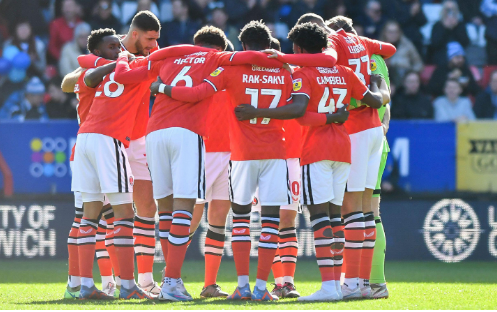The Vancouver Canucks’ defensive corps will be changed this season as general manager (GM) Patrik Allvin decided not to re-sign Nikita Zadorov and Ian Cole. Derek Forbort and Vincent Desharnais will take their place, two big-bodied blueliners who aren’t known for their mobility or offense.
There may be more to come before the puck drops on October 9, but as we approach the month of August, let’s take a look at what the defense pairings might look like against the Calgary Flames on opening night.
Quinn Hughes – Filip Hronek
Quinn Hughes and Filip Hronek will be long-term stalwarts of the Canucks’ blue line. The reigning Norris Trophy winner is contracted until 2027, and Hronek recently signed an eight-year agreement that will keep him in Vancouver until 2032. They have become the Canucks’ version of Cale Makar and Devon Toews, and despite Hronek’s significant dip in output near the conclusion of the season, he remains the ideal fit for Hughes on the top pairing and will be so in 2024-25.
Hughes and Hronek dominated the competition in terms of puck possession and chances last season, as evidenced by their figures. In 1,237:51 of even-strength ice time together, they had a 56.78 Corsi for percentage (CF%), and the Canucks created 659 scoring chances and 277 high-danger chances with them on the ice. According to MoneyPuck, they also scored 72 goals, trailing only Mattias Ekholm and Evan Bouchard (78). Hughes (plus-38) and Hronek (plus-33) had a collective plus/minus of 71. Overall, they were as productive as any top-pairing in the NHL last season and will most likely lead the way again this season.
Carson Soucy – Tyler Myers
When Carson Soucy was healthy last season, Tyler Myers was his most frequent defensive partner, and given their performance, they will most likely remain a combination to begin 2024-25. They only scored 12 goals in 393:23 at even strength, averaging 1.85 goals against per 60 minutes. Their CF% was 46.3, so they didn’t drive play, but they did a good job of limiting high-danger scoring opportunities, with the Canucks generating 66 to the opponents’ 61.
When Carson Soucy was healthy last season, Tyler Myers was his most frequent defensive partner, and based on their success, they will most likely continue to play together in 2024-25. They only scored 12 goals in 393:23 at even strength, with an average of 1.85 goals against per 60 minutes. Their CF% was 46.3, meaning they did not drive play, but they did an excellent job of restricting high-danger scoring opportunities, with the Canucks generating 66 to the opponents’ 61.
As for Myers, despite the criticism he frequently receives from fans and media for his defensive lapses and bad penalties, I believe he significantly reduced them past season. He no longer deserves the nickname “Chaos Giraffe” and should be recognized for his overall two-way game. Tocchet, Adam Foote, and Sergei Gonchar appear to have worked out how to bring out the best in the 6-foot-8 defender and make him a useful member of the blue line, even facing off against Connor McDavid and Leon Draisaitl in the playoffs.
Yes, you read that right: he was part of the shutdown combination sent out to limit two of the best in the world. That alone demonstrates Myers’ improvement over the past season or so. So much so that Allvin believed he was worth resigning for another three years, which, while I may be in the minority, I believe was preferable to bringing back Zadorov.
Derek Forbort – Vincent Desharnais
Now for the novices. There is no history between Forbort and Desharnais, hence there are no statistics to discuss. However, if they are put together to begin the season, they should be an excellent duo. Physicality, tenacity, and body sacrifice will be the word of the game for this combo, who have combined for 1,038 hits (858 for Forbort, 180 for Desharnais) and 1,029 blocked shots (859 for Forbort, 170 for Desharnais) in their respective careers. Mobility may be an issue, but both have been major components of their prior teams, with Forbort averaging 17:48 TOI in Boston and Desharnais 15:44 TOI in Edmonton.
Forbort and Desharnais could possibly be one of Tocchet’s best combinations when the Canucks are without a player. Forbort was particularly praised as a solid penalty killer who “loves eating pucks” in Jake DeBrusk’s initial interview, so I’m sure he’ll be a staple in that position, presumably taking on Cole’s 2:39 of average shorthanded ice time last season. Desharnais is also no stranger to the penalty kill, having trailed just Darnell Nurse (2:30) and Cody Ceci (2:36) on the Oilers at 2:02.
7th Defenceman: Noah Juulsen
This will be determined by whether the Canucks sign 14 forwards or eight defencemen for the regular season, but based on my forward forecasts, I incline toward the former. In this instance, Noah Juulsen will take seventh place ahead of Mark Friedman. He made significant improvements to his game last season and became the ideal plug-and-play defender. Because of his injury difficulties, Soucy played 54 games and established himself as a strong, no-nonsense alternative who was not hesitant to hit and block shots.
The Surrey, BC native ended with 164 hits (leading the defense corps) and 85 blocked shots (fourth behind Hronek, Myers, and Cole), as well as a strong presence on the penalty kill. If any of the Canucks’ best penalty-killing defencemen are injured, he is an ideal alternative because he plays in the similar way as Forbort and Desharnais.
Canucks’ Defence Doesn’t Lack Height or Physicality
Last season, the Canucks’ defense corps was one of the largest in the league, with only Hughes standing under 6 feet. This season will be much of the same, with Forbort (6-foot-4) and Desharnais (6-foot-6) replacing Cole (6-foot-1) and Zadorov (6-foot-7). In fact, they will be larger, with Forbort towering three inches taller than Cole and Desharnais only one inch shorter than Zadorov. Additionally, with the exception of Hughes and Hronek, they are all physical and eager to hurl their bodies in front of pucks. Essentially, while this defensive group lacks mobility and puck movement beyond Hughes, Hronek, and Myers, they will be one of the most difficult groups to oppose night in and night out, which is exactly how Foote and Tocchet prefer it.



